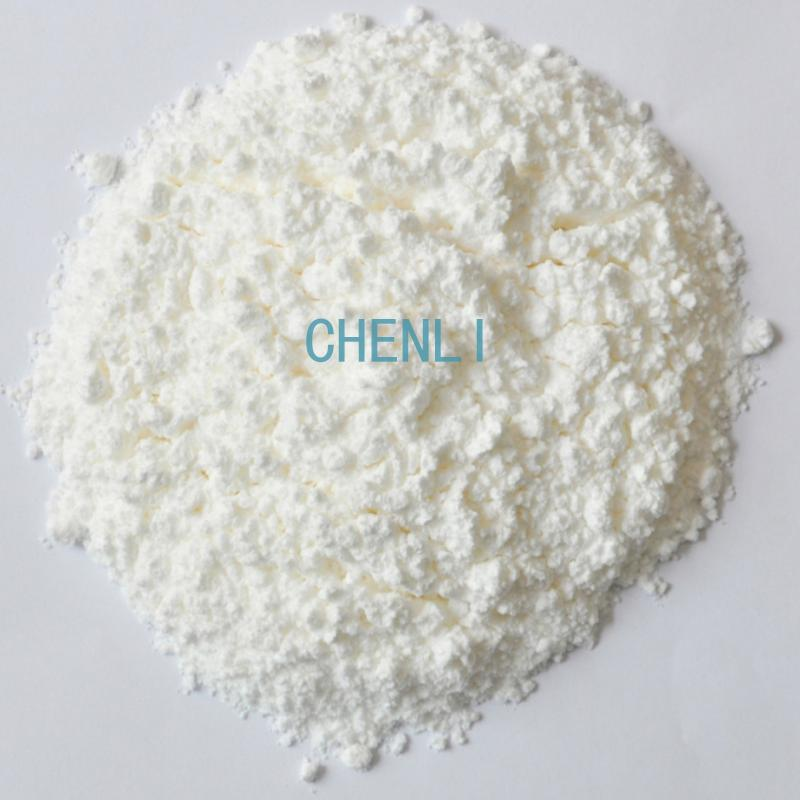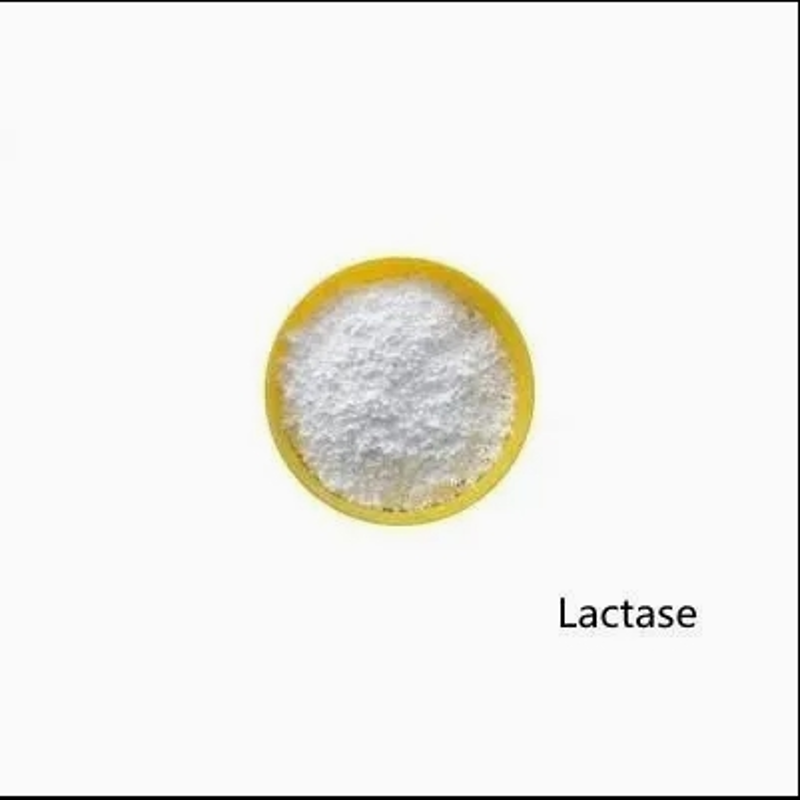-
Categories
-
Pharmaceutical Intermediates
-
Active Pharmaceutical Ingredients
-
Food Additives
- Industrial Coatings
- Agrochemicals
- Dyes and Pigments
- Surfactant
- Flavors and Fragrances
- Chemical Reagents
- Catalyst and Auxiliary
- Natural Products
- Inorganic Chemistry
-
Organic Chemistry
-
Biochemical Engineering
- Analytical Chemistry
-
Cosmetic Ingredient
- Water Treatment Chemical
-
Pharmaceutical Intermediates
Promotion
ECHEMI Mall
Wholesale
Weekly Price
Exhibition
News
-
Trade Service
People with diabetes should also have the right to sugar.Humans have been entangled in this issue for a long time: on the one hand, from carbonated drinks to pastry nectar, we are surrounded by a variety of attractive high-sugar foods, and on the other hand, people are acutely aware that excessive sugar intake can lead to obesity and other complications.a study of Eskimos in northern Alaska found that although there was no sweet eating habit and sugar insatiability was widespread, they could not resist the temptation to eat sweets., many people are experiencing the same struggles as the Eskimos every day. In addition, there are nearly 350 million
people
the world.in Paraguay, South America, locals need to be happier faced with the problem. A leafy
called
Stevia
has been planted and eaten here for hundreds of years. The plant is largely in line with the perfect vision of
saccharin : like sucrose, it comes from natural plants and has a natural sweetness, but it is
200
to
300
times sweeter than sucrose;stevia is
key
the "third sweet
"
revolution.Coca-Cola recently experimented with the launch of its new Cola Product
Coca Cola Life
in Argentina, using stevia sugar as a sweetener with half the sugar content of Coca-Cola and slightly higher than Diet Coke. Almost at the same time, Pepsico also launched the
Pepsi Next
Coke, which focuses on stevia sugar in Australia and France, which is
30
% lower than the original Pepsi. In addition to the main Cola products, stevia sugar is also used in other product lines, including Fanta, vitamin water and so on.two coke brands are particularly eager for the new sweetener. PepsiCo CEO Indra
.
(
). Indra Nooyi
) said in a recent conference call that the
cola industry has not really innovated a diet since
developed it in the
1960s.
”Behind the rival rivals are companies such as
Pure
. It is currently the world's largest supplier of stevia sugar raw materials, Coca-Cola, PepsiCo, Kraft, Danon
...
Almost all of the big food and beverage companies you can think of are its customers., marketing director for Asia Pacific at Spectrum Asia Pacific, told First Financial Weekly that the number of products using stevia in the food and beverage industry has increased from
276,
in
2009-
to
1087
in
,2012.
are expected
reach 1,658
2013
2013.market research from
Nielsen found that sales of stevia products across all U.S. retail channels rose from $
4
billion in 2009-
to $
1.6 billion in 2012
carbonated drinks have been criticized as junk food because of their high sugar and calories. Stevia sugar, on the other, provides the perfect solution that does not sacrifice sweetness while replacing sucrose and greatly reduces calories. The all-natural, zero-calorie sweetener is much more appealing to consumers than the troubled artificial sweetener
-
, which makes headlines every once in a while about the health threat of aspartas sweeteners.The first revolution in the sweet industry dates back to
1000
A.D., when people in the ancient Indian subse continent learned to juice sugar cane and crystallize it into solid
s to make sucrose;second revolution took place
the
1960s, an era of great discovery of artificial sweeteners. Sugar made from natural plant materials is expensive, and synthetic sugars made from chemicals are not only inexpensive, but often hundreds of times sweeter and less used than sucrose, thus achieving a significant reduction in calorie and sugar intake.chemists have teamed up with sugar giants to
various
since the 1960s.
The concept of
saccharides has also become inexplicable on food labels: from early saccharin and sweeteners to Ansemi, aspartas and sucralose, the sweetener industry has undergone five generations of change and the taste is getting closer to sucrose.
1976, the British sugar giant
Tate and Lyie
jointly developed sucralose with the University of London, the most perfect artificial sweetener for humans to date. Thales applied for a patent and trademark
Splenda
, and the last product was able to reach almost zero calories through a mix-up. Currently, both Diet and Zero Degrees Coke use a compound formulation of artificial sweeteners Ansemi, asparta sweetener and sucralose, which are widely used as a substitute for sucrose. August
,
, 2004, Coca-Cola and Pepsico announced that they would replace
50
percent of the sugar consumption in some of their beverages with sucralose. Global sugar sales even fell by
11% between
1999 and
2004
. then stevia came. Japan and South Korea pioneered research as early as
1970s
and
1980s
and approved the use of stevia extract stevia sugar as a legitimate food additive. Other Asian countries, such as China, subsequently approved the use. But at the time, due to technical limitations, stevia glycosides not only produced low yields, but also tasted poorly and never became mainstream, usually you can only find the name at the end of the ingredients list. 2008
, the U.S. Food and Drug Administration (
FDA
) pioneered the adoption of lebodyside
A, the main ingredient in stevia
(
"Reb A"
)
"
Generally Considered Safe
"
(
GRAS
) resolution may be used as a general sweetener in the United States.
November
,
,
, the European Commission, which has long been known for its stringent food safety standards, also announced that stevia sugar would be allowed. opening up of two major markets in Europe and the United States has made the otherwise humble South American plant the world's third-largest source of sugar in the future, most likely to be compared to sugar cane and beet. 2008
, just after
FDA
recognized the safety of
Reb A
, Coca-Cola and the agricultural giant
Cargill
Group quickly teamed up to form
Reb A
, a
Truvia
. This was followed by a joint venture between PepsiCo and Chicago-based sweetener maker
Merrisant
to form the
Pure Via
. like licorice and rohan fruit, which are already commonly used natural sweeteners, stevia initially faced low yields and high extraction costs. "
first generation of stevia sugar because of its low purity, contains a lot of impurities, so the taste is not good, but can only reduce the sugar content of
10
% to
15
%.
,"
Jianfeng, Asia Pacific Technical Applications Manager at Spectrometology, told First Financial Weekly. Second generation stevia sugar, represented by high purity
Reb A
extract, has made a big breakthrough in taste and sweetness, and sugar is relatively close, is currently able to achieve mass production, commercial application of the most widely used stevia sugar products, sugar reduction levels can reach
30
% to
50
%. Since
2012
, Spectrometry has been launching a third generation of products that no longer rely on a single stevia glycoside, but rather on a mix of multiple extracts to enhance the taste while meeting the sugar reduction target of more than
50,
%. the process of extracting glycosides from the leaves of stevia is a bit like making tea. After the leaves are harvested, they need to
for a long time
40 to
to 50 degrees C
in the water. The resulting liquid is already sweet, but contains a variety of impurities that can still affect the quality of the glycosides that are eventually extracted. These original extracts need to be de-misheard, decolored, and then further extracted with different high-purity glycosides. different types of glycosides, sweet characteristics are also different. According to the results of the study so far, the leaves of stevia contain a total of
11
kinds of glycosides that produce sweetness, of which
Reb A
contains the highest content, as high as
60
%, and the sweetest, pure taste, so high purity
Reb A
has been considered the best stevia products in the past. The type and quantity of glycosides extracted, and the quality of mixing them, are key to competition among stevia sugar technology companies. 's job is to develop stevia sugar formulations that are suitable for them in the lab, depending on the customer's needs. Teng Jianfeng introduced, from breeding to production equipment to extraction processes, and even reagents, the company has invested in almost every link of the entire industrial chain, the amount of investment in plant equipment alone is as high as
200 million U
has stevia growing bases around the world, the largest of which is in Ganzhou, Jiangxi Province, which accounts for
80
% of global production. Because the amount of glycosides contained in stevia leaves is related to the taste of the product after purification, so the growth process of stevia sunlight, soil, humidity and so on are very important. As a result of increased production and advances in extraction technology, the current unit cost of stevia sugar has been reduced from
2000
yuan per kilogram before
3
to
1000
to
1500
yuan per kilogram today, while the unit cost of Rohan goose glycoside is still around
3,000
yuan. "
cost is no longer a particularly big challenge for stevia sugar. The cost of some stevia sugar products is now cheaper than sugar, and much cheaper than the synthetic sweetener high fructose syrup commonly used in many beverages.
,"
Teng Jianfeng said. extracts obtained through simple processing at our plants in China will be sent to Spectrom's plant in Malaysia, which brings together the most core technologies. Teng Jianfeng revealed that there are many scientists from Russia. Because it is located in the high cold region, sugar cane and beet can not be grown, Russia has been lacking its own source of sugar, and stevia in South America or China's northeast region can be grown, but also belong to the high-fold sweetener, less can meet the demand, Russian experts on stevia sugar research is particularly in-depth. the most mature stevia glycoside
-
high purity
Reb A
does not taste good in carbonated beverages, it is more suitable for tea drinks and honey.
"Reb A
produces after-bitter or other residual odor problems in some beverages, which is particularly serious in carbonated cola beverages.
,"
Pepsi described in a report on stevia glycosides. therefore
R







